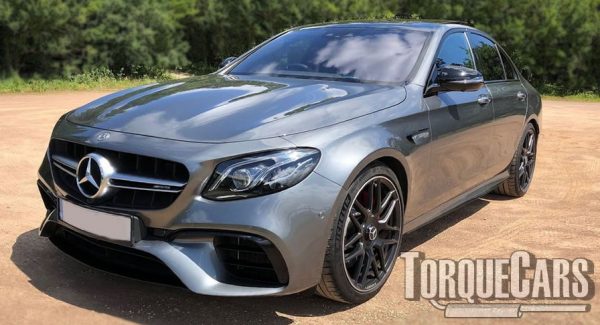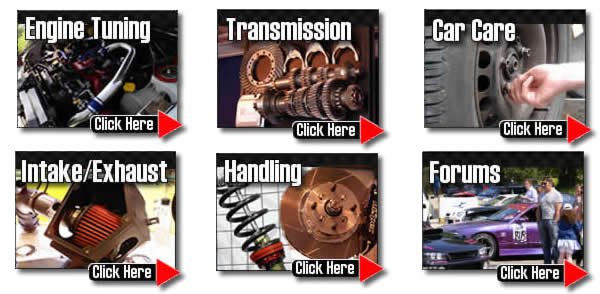Mercedes Benz E Class Tuning
"Thank you for reading my E Class tuning guide"
We review and look at E Class tuning and highlight the greatest mods that work. Mercedes Benz E Class's make awesome project cars and with carefully chosen sports modifications you can greatly maximise your driving experience.
The E Class is a good car tuning project to play with. We see people often wasting money on their E Class doing the wrong mods and then having to start over. Follow our articles to avoid making the common mistakes
The W124, first generation E class was released in 1994 with a range of petrol and diesel engines. It came in a saloon W125 Coupe C124 and Wagon/Estate S124 versions. The V8 engine models wore a 400E or 500E badge.
Second generation E class, the W210 was sold between 1996 and 2002 and addressed many areas for improvement over the previous version. It achieved car of the year from motor trend in 1996.
The W211 was the third generation which arrived in 2003 and ran until 2009. The CLS was based on this platform. We also saw an E63 AMG version released, showing the potential of this platform in the hands of the right tuner.
In 2009 we met the W212, a new teardrop headlight design and met fuel economy requirements whilst dishing out a fair amount of power. It was a great car to drive and has proved quite popular.

The W213 was released in 2016 where silky smooth inline 6 cylinder engines were offered and many electronic driving enhancements such as self driving system which operates for periods of 120 seconds (this feature was introduced on the E63 and later became available on the non AMG tuned versions).
The E Class is a good car tuning project to play with. The key to E Class tuning is finding the right mods - a lot of money can be wasted if you do it wrong.

Handling modifications are often a priority for the E Class. We would go to a maximum drop of 35mm on most models. You risk rubbing on the arches if you go lower than this.
Top end power should be your overall aim on the E Class with a nice fat peak torque band.
Smaller engines do not provide much of a return in terms of power so start with a bigger engine. Engine swaps are a good option if you have a small engine size.
Intake and Exhaust Tuning.
Breathing mods are usually next up. Please note that WE DO NOT generally RECOMMEND INDUCTION KITS on NASP engines, unless you have tuned your car extensively and are finding that the standard air intake has become a restriction. Mercedes air boxes flow really well. We note that AMG and Brabus do not use induction kits as part of their tuning packages.
Derestricting the airflow into the engine is the primary part of car tuners so get a freer flowing air filter if you find that the car is running rich.
Induction kits can sound great but due to the warm air in the engine bay they will not really increase power and often rob you of power on most cars.
Sports exhausts generally help improve air flow out of the engine but do not go too large or you may end up will reduce the flow rate. Stick to 1.5 to 2.5 inches for best results.
Head work including a gas flow (ported and polished) and 3 or 5 angle valve job will really help to release the potential of the engine. Your clutch can fail if it starts to weaken and the standard clutches are only ever good for power gains of up to 46%. Fit an upgraded clutch to avoid power losses through the transmission. Remaps offer phenomenal power gains on all turbo charged cars. On NASP engines the benefits are doubtful. However a flashed ecu on a NASP engine will help unleash the potential if you have done a lot of mods.
We've also seen some tuners playing with twincharged applications and making some very high power figures.
Adding forced induction will see significant power gains but this is usually too expensive to be cost effective. It is generally simpler to add a supercharger than it is to get a turbo working. Turbos give boost in exponential proportion to rising engine speed and this can make mapping difficult.
Superchargers however will give a boost which is directly proportional to engine speed so is easier to map. To cope with forced induction you will usually need to decrease the engines compression ratio .
Alloy wheel upgrades.
Due to the fact that alloys are less heavy they improve performance and they can help to cool the brake disks. The drawback to large alloy wheels on your E Class is that you're changing your final drive ratio and this will have a negative effect on acceleration and performance.
Due to this fact we would advise sticking to a maximum wheel size of 18 inches, although we know some of our members have fitted larger wheels with no problems.
Engine tuning mods.
These are the upgrades are usually fitted by our members, decide how far you want to go before you get going.
Getting the best uprated parts for your planned usage of the car is vital. Stage 3 motor sport mods just don't work well on the road and will make the car undrivable.
Please watch our introduction Video tutorial to car tuning. Be sure to subscribe and support our new channel.
How to tune your car
- Improve the handling
Focus on Suspension improvements, such as coilovers and make sure the bushings are in good order and that the alignment is correct. Then focus on improving the brakes, with a big disk brake conversion kit and fast road brake pads.
- Remove restrictions
Focus on the intake and exhaust with filters being the common point of restriction in a tuned car. Intercoolers may also become restrictive on turbo engines so this may also need to be uprated.
- Burn more fuel & air
Increase the fuelling so it matches the air coming into the engine. The ratio is important so you need to improve the fuel pump and injectors, so the head mods, big valve conversions, fast road camshafts and forced induction upgrades extra supply of air is adequately met.
- Test and replace any weak parts
Weak areas are commonly the clutch, the turbocharger and pistons and crankshaft in a highly tuned engine. Makes sure these components will cope with your power aspirations.
- The Tune or Remap
A cars ECU controls the fuel, timing, spark and even the turbo in some cases, so to fully extract your gains you should remap the car last and this will fully release the power. Some cars are easy to map, and others require piggyback ECU's or aftermarket ECU's but this is the most vital step of your tuning project.
Modifying to Stage 1:
Sports exhaust, Remap, Panel air filter, Lighter flywheel, Suspension upgrade (drop 30-40mm), Alloy wheels.
Modifying to Stage 2:
fuel pump upgrades, Ported and polished head, high flow fuel injector, Power/Sport clutch, Fast road cam.
Modifying to Stage 3:
Sports gearbox, Adding or upgrading forced induction (turbo/supercharger), Internal engine upgrades (pistons/head/valves), Engine balancing, Competition cam.
Peak power is nice in motorsport but for a daily driven car you need a wide power band and perhaps extending the rev range.
Mercedes used a Supercharger on many engines throughout their range, and with a simple overdrive pulley you can boost the power output significantly. Add in twincharging, or a larger compressor and you can see some really impressive power gains.
The whole point of our tips is to give a brief overview of car tuning mods and point you in the right direction, our forum is where you can ask for more detailed advice and tips on your modified car project, the best uprated modifications and all aspects of modding cars.A fast road cam will be one of the best NASP power modifications you can do with a single part fitted to your engine.
The intake and exhaust flow play a large part in your cars power band, but be careful here, getting this wrong can upset the idle and make the car impossible to drive in traffic. You'd need to follow a camshaft upgrade with other mods and finish with a performance chip to fully realise your gains.You will need to ensure that the engine is not starved of fuel so will need to ramp up the fuelling.
Using high octane petrol is another option if you find you are suffering from pinking or premature ignition on your Mercedes Benz project after fitting other performance upgrades. Uprating the injectors is another beneficial modification and will deliver sufficient fuel. If have increased your fuelling with bigger injectors you will also need to get a bigger fuel pump to supply it.
For more information on Tuning your car please join us in our friendly forum where you can discuss E Class options in more detail with our E Class owners. It would also be worth reading our unbiased Mercedes Benz tuning articles to get a full grasp of the benefits and drawbacks of each modification.
Please help us improve these tips by sending us your feedback in the comments box below. We love to hear what our visitors have got up to and which mods work best for them on each model of car. Comments are used to improve the accuracy of these articles which are continually updated.
If you liked this page please share it with your friends, drop a link to it in your favourite forum or use the bookmarking options to save it to your social media profile.
Check out TorqueCars new YouTube channel, and see their awesome new content...
Feedback
Please use our forums if you wish to ask a tuning question, and please note we do not sell parts or services, we are just an online magazine.
Help us improve, leave a suggestion or tip
